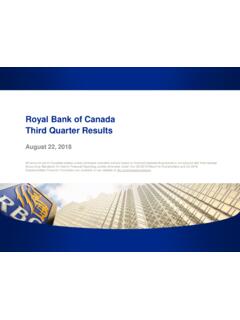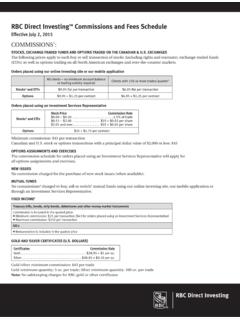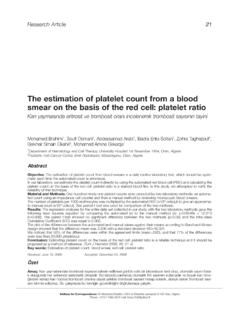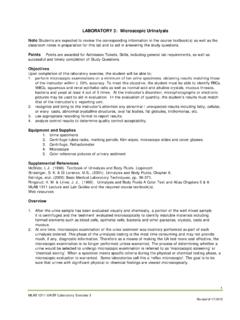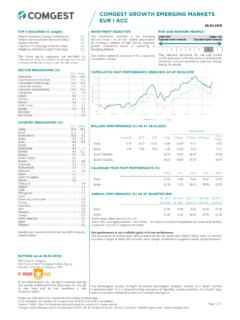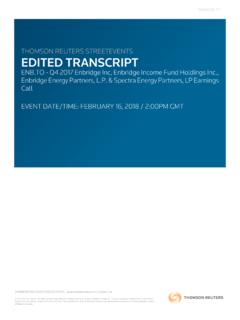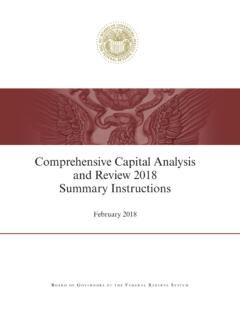Transcription of Sickle Cell Anemia: Genetic Factors, Prevalence and Control
1 International Journal of Scientific and Research Publications, Volume 6, Issue 4, April 2016 176. ISSN 2250-3153. Sickle Cell anemia : Genetic Factors, Prevalence and Control Shahid Raza1, Muhammad Waseem Shoaib2, Saima Jabeen2 and Hira Mubeen1. 1. University of South Asia, Lahore, Pakistan 2. District Head Quarter (DHQ), Faisalabad, Pakistan Abstract- Sickle cell anemia is a Genetic disorder resulting in called hemoglobin. Hemoglobin binds oxygen in the lungs and irregularly regulating red blood cells also called as sickled cells transport to the rest of the body. Sickle cells are stiff and sticky leading to serious conditions like stroke, acute chest syndrome, and tend to block blood flow in the blood vessels, which can pulmonary hypertension, organ damage, blindness and skin cause pain and organ damage.
2 Ulcers. Several mutations in HBB gene can cause Sickle cell disease. Persons with Sickle cell anemia can inherit infected genes from both parents. Despite a variable disease severity, II. GENETICS OF Sickle CELL DISEASE. individuals affected require regular health care from childhood Mutations in the HBB gene cause Sickle cell disease. all the way to adult age. This review, highlights the increased Hemoglobin consists of four protein subunits, typically, two susceptibility to infections, the Genetic factors and preventive subunits called alpha-globin and two subunits called beta-globin. measures to overcome various complications and challenges for The HBB gene provides instructions for making beta-globin. Sickle cell anemia . Different mutations are caused due to various forms of beta globin in the HBB gene.
3 One particular HBB gene mutation Index Terms- stroke, sickled cells , mutations, hypertension produces an abnormal version of beta-globin known as hemoglobin S (HbS). Other mutations in the HBB gene lead to additional abnormal versions of beta-globin such as hemoglobin I. INTRODUCTION C (HbC) and hemoglobin E (HbE). In people with Sickle cell S ickle cell anemia is a Genetic disease associated with episodes of acute illness and progressive organ damage leading to erythrocyte rigidity. People with this disorder have disease, at least one of the beta-globin subunits in hemoglobin is replaced with hemoglobin S. In Sickle cell anemia , hemoglobin S. replaces both beta-globin subunits in hemoglobin. In other types atypical hemoglobin molecules called hemoglobin S, which can of Sickle cell disease, just one beta-globin subunit in hemoglobin distort red blood cells into a Sickle shape.
4 Is replaced with hemoglobin S. Abnormal versions of beta-globin The Sickle cell mutation reflects a single change in the amino can distort red blood cells into a Sickle shape. The Sickle -shaped acid building blocks of the oxygen-transport protein, red blood cells die prematurely, which can lead to anemia . hemoglobin. This protein has two subunits and gives red color to cells . The alpha subunit is normal in people with Sickle cell disease. The beta subunit has the amino acid valine at position 6 III. SYMPTOMS. instead of the glutamic acid that is normally present. Sickled Symptoms of Sickle cell disorder include Hand-foot cells cannot squeeze through the narrow blood vessels and stack syndrome, anemia symptoms such as fatigue and paleness, up to block blood flow.
5 This blockage prevents oxygen from unpredictable episodes of pain, chronic inflammation, eye being transferred to tissue and organs which is known as problems, jaundice, delayed growth in children, infections and ischemia. The loss of oxygen can result in tissue damage. The sometimes stroke. Patients with SCD are also susceptible to lifespan of Sickle RBCs 10-20 days as compared to the 120-day diseases such as osteomyelitis and the spleen and kidneys of lifespan of normal RBCs which results in chronic anemia in SCD SCD patients are particularly susceptible to ischemic damage. patients [1]. This chronic hemolysis leads to the generation of The underlying abnormality is a single nucleotide substitution many other toxic molecules. (GTG for GAG) in the gene for -globin on chromosome 11, In 1949, Dr.
6 Pauling and colleagues were the first to indicate resulting in the replacement of a glutamic acid residue with that Sickle cell disease occurs as a result of an abnormality in the valine on the surface of the protein (termed HbS)[3]. In normal hemoglobin molecule [2]. This was the first time a Genetic adult HbA, two chains of -globin and two of -globin form a disease was linked to a mutation of a specific protein. The Sickle tetramer, stabilized by specific intra molecular points of contact, cell mutation occurs when a single base change in the DNA, is but without interactions between individual tetramers within the the fundamental Genetic material that determines the arrangement RBC [4]. When the molecule binds or releases oxygen, it of the amino acid building blocks in all proteins.
7 It is now a undergoes a conformational change. In HbS, deoxygenation known fact that SCD is an inherited disease which is passed exposes the abnormal valine residue on the surface of the down from parents to children. SCD is a serious disorder in molecule, which then forms hydrophobic interactions with which the body makes Sickle -shaped red blood cells . They move adjacent chains. The resulting polymers align into bundles, easily through blood vessels. Red blood cells contain a protein causing distortion of the RBC into a crescent or Sickle shape and International Journal of Scientific and Research Publications, Volume 6, Issue 4, April 2016 177. ISSN 2250-3153. reducing flexibility and deformability, which impairs passage of recommendations continue to evolve.
8 Simple general measures the cells through narrow blood vessels [5]. Sickling can be are important in reducing the risk of infection, though the aim is precipitated by environmental factors such as hypoxia, low pH, to ensure as normal a lifestyle as possible. Meticulous attention cold, and dehydration of the RBC, as well as adhesion molecules to hygiene, particularly hand-washing, is vital, and to protect and cytokines associated with infections. against Salmonella, patients are advised to cook food thoroughly, A number of other mechanisms for increased susceptibility particularly chicken and eggs, keep items refrigerated, and avoid to infection in SCD have been explored. Major infections occur contamination [12]. Nutritional supplementation with zinc has in early infancy when the spleen is still partially functional and been reported to reduce infection risk, improve growth rates in some increased risk persists despite modern prophylactic SCD children, and possibly improve skeletal and sexual measures, suggesting additional immune deficits are present [6].
9 Maturation as well as having psychological benefits [13]. Early Patients also seem predisposed to other infections, including identification of infections is another key area, enabling prompt Escherichia coli urinary tract infection, Mycoplasma pneumonia initiation of treatment to reduce complications. Parents are respiratory infections, and dental infections caused by anaerobes. encouraged to monitor their children closely at home and seek The complement system involves a large number of plasma advice if they have a fever or respiratory symptoms, while proteins that are cleaved sequentially by protease enzymes to maintaining good hydration. There should be a low threshold for generate active fragments. The cascade can be activated either the use of antibiotics in ill children with SCD, particularly in the via the classical pathway, following binding of IgM or IgG to presence of chest signs or symptoms, which may herald ACS.
10 A. surface antigens, or the alternative pathway, in which C3b fever of more than C is an indication for the empirical use interacts directly with the pathogen cell surface, then recruiting of broad-spectrum antibiotics such as a third-generation further downstream components [7]. cephalosporin, with a macrolide added in potential ACS. Relevant specimens (blood, urine, sputum, etc.) should be taken for culture and antibiotics later modified or stopped depending IV. Genetic FACTORS on the results [14]. Despite sharing the same underlying Genetic mutation, the range of severity in the phenotype of SCD is striking, with some patients disabled by frequent crises and long-term complications VI. Genetic COUNSELING. while others live virtually normal lives.










